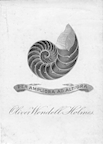
Historically, heraldic imagery has been displayed on flags and on military arms and armor, helping to identify combatants on battlefields. In feudal societies, it marked distinguished individuals, families, and institutions. Today, heraldic imagery is placed in a family's home on its dining table — on objects made of silver, porcelain, glass, etc. — or printed on its stationery, bookplates, etc.
Heraldry has long been associated with traditions of a European aristocracy whose cultural roles have changed over the years. Depending on one's political attitudes, heraldry's contemporary uses are variously revered, envied, reviled, or merely passé. Because so many of today's emblems of individual and class identity are different from those of the past, some applications of heraldic imagery today are likely to be considered artificial or pretentious.
Completely describing a coat of arms in heraldic terms is called blazoning. A charge is anything borne on a shield, whether upon a field (the surface of a single area) or upon an ordinary (an edge dividing a shield). Heraldic terms include:
| addorsed | back to back |
| ambulant | walking |
| attires | deer's antlers |
| bearing / charge / device | emblem or figure on a shield |
| bezant | gold roundel |
| blazen | written description of armorial bearing |
| camelopard | giraffelike creatures with horns |
| canting arms / armes parlantes | punning shiled or emblem |
| canton | small square division on a shield |
| chevron | |
| cinquefoil | five-petaled flower |
| clarion | horn or trumpet |
| cockatrice | cockerel with a dragon's wings and tail |
| cognizance | crest or badge |
| College of Arms | ruling body of Heraldry in England |
| couchant | lying, with head raised |
| Court of the Lord Lyon | ruling body of heraldry in Scotland |
| dormant | lying, with head on paws |
| embattled | with battlements |
| ensigned | with official headgear, such as a coronet or miter, set above the shield |
| escutcheon | shield |
| field | surface of a single area of a shield |
| gouttes | droplets |
| griffin | beast with the front parts of an eagle and the back parts of a lion |
| hatchment / achievement | diamond-shaped display of a dead person's coat of arms |
| herald | senior heraldic officer |
| issuant | emerging |
| lambrequin / mantling | scarf over a helmet |
| mound | mound or sphere of gold |
| nowed | knotted |
| ordinary | fields into which a shield is divided. Mostly plain in their shape, ordinaries include those known as the pale, fess, cross, bordure, chief, bend, saltire, chevron, pile, and diminutives |
| part or parition | the way in which a shield is divided into areas of two or more colors |
| phoenix | eagle-like bird arising from flames and ashes |
| pursuivant | junior heraldic officer |
| quatrefoil | four-petaled flower |
| rampant | |
| roundel | circular design or symbol |
| salient | leaping |
| semé | scattered with small figures |
| splendor | human-faced sun surrounded with rays |
| tierced | divided into three |
| tincture |
colors When a coat of arms is represented in black and white, the tinctures are indicated by a standard system of patterns, called metals (gold or silver), colors (gules [red], azure [blue], sable [black], vert [green], purpure [purple], tenné [orange], sanguine [blood red]) and furs (ermine, vair, and potent). |
| undé / undy | wavy |
| undée | pointed |
| urinant | (water animal) with head bowed |
| voided | with center empty or cut out |
| volant | flying |
| wyvern | two-legged winged dragon |
Examples of heraldic designs:

France, Beauvais, 1685, Chancellery Tapestry with Louis XIV's Coat of
Arms and Louis Boucherat's Monogram, tapestry, wool and silk, 3.61 x 4.40 m, Louvre.
See coat of arms and monogram.

English, Bookplate for the Earl of Guilford, Wroxton Abbey,
18th century, engraving,
112 x 90 mm, U of Notre Dame, South Bend, IN. This heraldic design consists
of a shield supported by two dragons rampant, wings elevated,
ducally gorged and chained, with an earl's crown. The arms:
azure a lion passant or between three fleurs-de-lis argent. The
motto: "La vertu est la seule noblesse." This bookplate
most likely belonged to Francis, 1st Earl of Guilford (1704-1790),
Frederick, 2nd Earl (1732-1792), or George Augustus, 3rd Earl
(1757-1802).

United States of America, Boston, Bookplate of Oliver Wendell Holmes, "Per
ampliora ad altiora", 1875, engraving, c. 10.3 x 7.4 cm, U of Notre
Dame, South Bend, IN. This bookplate
depicts a seashell with a volute
design.

Baron von Voelkersam (German) designer, Bookplate for Czar
Nicholas II, 1907, Library of the Winter Palace, St.
Petersburg, Russia. The focal
point of the arms of the czar is an ancipital
eagle.
Mauro Pieroni (Italian, contemporary)
Also see crown, logo, sign, and symbol.
https://inform.quest/_art